
The Free Press

When we began covering the illiberal orthodoxy overtaking America’s schools, we knew, from the breadth and depth of reader response, that this was an issue that resonated deeply with readers across the political spectrum and the country. But we couldn’t have imagined that today’s governor’s race in Virginia would turn on this issue—and that it very well might hand a win to Republican and first-time candidate Glenn Youngkin over the Democrat (and former governor) Terry McAuliffe.
Youngkin is leading by an astonishing 15 points among Virginia parents with kids in K-12 school:
Youngkin is hammering the theme on the stump, telling a crowd yesterday: “We will not teach our children to view everything through a lens of race.” He has promised to ban critical race theory on his first day in office. If he does, he’ll follow the lead of multiple states that have already passed similar bills.
But the question remains: Is this a wise tactic? Is banning critical race theory the right way to ensure that an ideology based on racial essentialism doesn’t take root in our schools?
I have friends I admire on both sides of this question. A few months ago, we hosted a debate between two of the sharpest voices on this subject: Chris Rufo, who has been the country’s most prominent and effective champion of these bills, and David French, whose stalwart commitments to civil libertarianism has made him a skeptic. If you missed it, please give it a listen:
In the essay below, David French reports on the fallout of these bills in states like Texas and Tennessee, where he lives with his family. It is there that parents have complained about Norman Rockwell’s painting The Problem We All Live With (shown above) which depicts the courageous Ruby Bridges. David suggests that in the attempt to respond to left-wing intolerance the right is creating their own.
— BW
Late last week, my friends Greg Lukianoff and Jonathan Haidt published an important piece in the online journal Persuasion that contained a startling statistic. Since 2015, there have been 471 separate efforts to fire university professors and scholars for their speech. More than 60 percent of those efforts have come from the left (though most of the physical threats have come from the right).
That number comes from the Foundation for Individual Rights in Education (FIRE), and while it’s deeply troubling, it’s no longer shocking. Free speech has been under fire on campus for a very long time. I’ve been combating illiberal campus censorship since I first enrolled in law school in 1991. As the first member of FIRE’s legal network and a former FIRE president, my colleagues and I confronted “cancel culture” before anyone had even conceived of the term.
I remember those early days, when I’d travel to fundraising events and have to convince skeptical donors that campus free speech battles mattered. “Just wait until those kids hit the real world,” skeptics would say. “Then they’ll drop this nonsense.”
Is there anyone left that still believes that? Campus activists graduated into the real world, and they changed it as much as or more than it changed them. And so we found ourselves in the midst of the Great Awokening—an ideological revolution that has put fundamental American commitments to free speech under siege.
While I’d been a conservative since childhood (a minor act of rebellion in my then-Democratic family), the spreading attack on free speech reaffirmed my commitment to the right. Old-school liberals were in retreat, and too many were dropping the flag of free expression. Young conservatives were only too happy to pick it up.
And everywhere these conservatives looked the threat seemed to grow. Over the past decade, ideologies that were born on elite campuses were now spreading to elementary and secondary education. Ideas inspired by the same critical theories that empowered campus speech codes were being taught even to young children in some public schools. Radical diversity, equity, and inclusion efforts were even, on occasion, re-segregating participants by race.
Leftist illiberalism demanded a response—and the response has come as a roar. In school districts across the country, parents have flooded board meetings to speak their mind. Today’s governor’s race in Virginia is turning on this issue, and its outcome could impact state and local races from coast to coast.
I am exactly the kind of person such grassroots efforts should appeal to. A lifetime of free speech litigation has taught me to be wary of radical teachers and administrators. Moreover, I’m in the class of citizens that’s often most-reviled by the far-left. I’m a pro-life, ideologically conservative Evangelical Christian who upholds traditional church teachings on sex and marriage. Am I not in danger of being canceled?
But something is going wrong on the right. An increasing number of politicians, lawyers, and activists are responding to fears of left-wing intolerance with their own efforts to censor, suppress, and cancel. They’re doing so in different places and different jurisdictions—the very places and jurisdictions where the right is dominant and where, all too often, the echoes of America’s most painful past can still be heard.
The most prominent example of right-wing illiberalism comes from the series of so-called “anti-CRT” bills being passed in legislatures across the country.
According to a Heritage Foundation tracker, the bills have been introduced in more than 20 states and passed in seven. They promise to protect children from a divisive and hateful ideology, but they’re largely a mess. They’re vague and poorly drafted, and they leave teachers utterly confused.
What can they teach? What can they not teach? What’s going to trigger a bunch of angry parents and lead to some state investigation or clamp-down?
Let’s deal with the confusion first. The most notorious example of this came two weeks ago in Southlake, Texas, when a school administrator told teachers that, if they include a “book on the Holocaust” in their syllabi, then they also have to include one with “opposing perspectives.”
Why would any administrator take a “both sides” view of the Holocaust? Maybe because Texas enacted a law in June (and updated it in September) that directs teachers, when discussing a “widely debated” or “currently controversial issue of public policy or social affairs,” to “strive to explore that topic from diverse and contending perspectives without giving deference to any one perspective.”
As surprising as it may be to most Americans, the hitherto unprecedented, historical fact of the Nazis’ murder of six million Jews is still “debated” and “controversial” in antisemitic circles. “How do you oppose the Holocaust?” one teacher asked. A school district spokesman explained: “Texas teachers are in a precarious position with the latest legal requirements.”
And what of outright censorship, including of expression that has nothing to do with critical race theory? Let’s stay in Texas for a moment. On October 25, the Chairman of the Texas House Committee on General Investigating sent a letter to superintendents noting that a number of school districts had removed books from libraries and classrooms “after receiving objections from students, parents, and taxpayers.”
He then attached an addendum featuring the titles of more than 800 books and demanded that superintendents “identify how many copies of each book in the attached Addendum your District possesses and at what campus locations including school library and classroom collections.” It also demands that superintendents identify any other books or content that, among other things, “might make students feel discomfort, guilt, anguish, or any other form of psychological distress because of their race or sex.” (Emphasis added.)
In addition to the hundreds of books listed in Texas (including “The Indian Removal Act and the Trail of Tears,” “Between the World and Me,” and “The Confessions of Nat Turner”), what other books “might” make students feel discomfort? Our local experience in Tennessee sheds some light.
I live in Williamson County, one of the nation’s most prosperous counties and a bastion of state Republican power. This summer, an activist group called Moms for Liberty filed a formal complaint with the Tennessee Department of Education alleging that four young-elementary books—“Martin Luther King Jr. and the March on Washington,” by Frances E. Ruffin, “Ruby Bridges Goes to School: My True Story,” by Ruby Bridges, “The Story of Ruby Bridges,” by Robert Coles, and “Separate Is Never Equal,” by Duncan Tonatiuh—violated the state’s new, expansive anti-CRT law.
I’d urge you to read the entire complaint. It does not refer to a single example of actual critical race theory. The objection is instead to the effect of photographs and accurate depictions of the Civil Rights Movement. Exposure to these historical details, we’re told, “makes children hate their country, each other, and/or themselves.”
If you think I’m exaggerating, here are some of the objections to “The Story of Ruby Bridges”: “Pages 20-21 show images of white people yelling and protesting with accompanying text, ‘The crowd seemed ready to kill her.’” And: “Pages 12-13 show more white protestors surrounding Ruby and reads ‘Men and women shouted at her. They pushed toward her.’”
To be clear, the complaint is complaining about photographs and descriptions that depict what life was actually like for black Americans living in the Jim Crow South.
The many problems with “Ruby Bridges Goes to School,” according to the complaint, include “photographs of a neighborhood sign that reads ‘WE WANT WHITE TENANTS IN OUR WHITE COMMUNITY’ and a smiling white boy holding a sign that says ‘We wont [sic] go to school with Negroes.’”
The complaint also takes issue with Norman Rockwell’s painting The Problem We All Live With, which depicts Ruby Bridges walking to school with the “n word” in the background and originally appeared, in 1964, in Look, a general-interest magazine published in Des Moines, Iowa. That’s right: They’re complaining about Norman Rockwell.
Why would parents appeal to a law meant to combat critical race theory to censor deeply troubling but wholly uncontroversial books? Because the law allows them to do just that. It bans any “concept” that “promot[es] division between, or resentment of, a race, sex, religion, creed, nonviolent political affiliation, social class, or class of people.”
This extraordinarily subjective standard permits parents to object whenever their children express anger or discomfort.
There is no question that stories of American segregation are difficult to hear, but when they read about Ruby Bridges or Martin Luther King Jr., children are reading about national heroes. Consider Rockwell’s painting. That young girl, in all her courage, is an example for us all. And if one doubts the need for instruction about racism, one need only read recent stories from the same school district in the same county. For example, in 2019, the Tennessean reported that white middle school students locked arms in a hallway to form “Trump’s wall” and let only white kids pass.
America is confronting two powerful illiberal movements, and where you stand on their relative threats can depend greatly on where you live. If you’re a conservative professor or student under fire in the elite academy, the travails of elementary school teachers in a Nashville suburb aren’t much on your mind. You’re fighting for your reputation and career against some of the most elite and powerful cultural forces in the United States.
But if you’re the parent of a black child who comes home in tears explaining that she wasn’t allowed past “Trump’s wall,” if you later witness a member of a school board audience shout “you’re in the South” when another parent laments the omnipresence of Confederate symbols, then the struggles of Ivy League conservatives don’t have much purchase.
We can fight all day about the relative significance and injuries of these events, but the troubling trend in American politics is the growing embrace of the raw will to power. I’ve defended civil liberties long enough to know there are readers who will read the stories above and think “Good. I’m glad the [Tennessee teachers or college conservatives] are afraid. It’s about time the tables turned.” Simply put, if they can censor their opponents, they will.
There is little question that the state exercises enormous authority over curricula and the classroom speech of teachers. A Supreme Court case called Garcetti v. Ceballos dramatically limits the free speech rights of public employees when they’re speaking as part of their official duties. Courts have granted college professors much greater leeway to speak, but most courts have held that K-12 teachers largely live under the state’s thumb. And progressive private universities have enormous authority over student speech.
But might does not make right, and if we use power punitively, then we create a nation of warring illiberal jurisdictions. Many of the same people who flex their muscles in Red America to pass expansive and vague anti-CRT laws cry foul when Blue America forces public school teachers to use preferred pronouns.
I remember, years ago, when I began my First Amendment litigation career, hearing FIRE’s two founders, Alan Charles Kors and Harvey Silverglate, challenge the idea that Americans were “too weak to live with freedom.” They believed that you trained even young Americans to venture forth in a pluralistic nation with confidence in their ideas and the fortitude to weather dissent.
That means encountering teachers and teaching you may not like. It means encountering words that trigger strong reactions. And, parents, that even means sometimes helping your children learn difficult truths and to question or even unlearn lessons they’ve learned at school. It’s not an easy path, but it’s a better path than the one we’re on now—where scholars are under fire from left and right, and in some schools even Norman Rockwell is out of bounds.

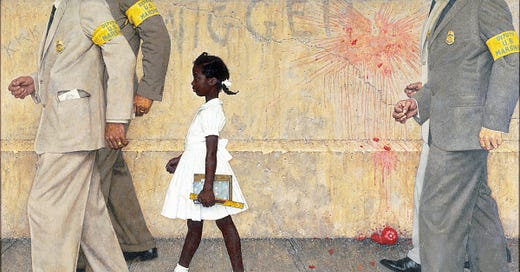


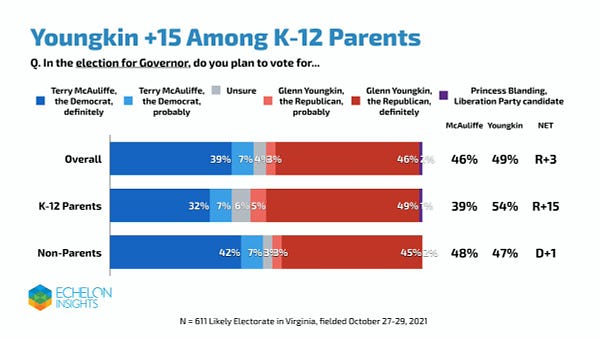


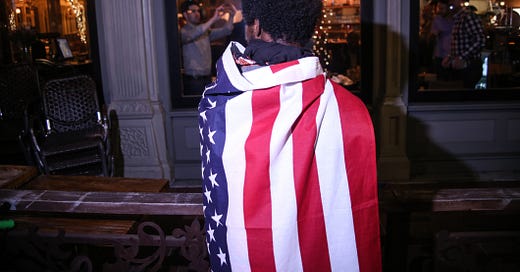
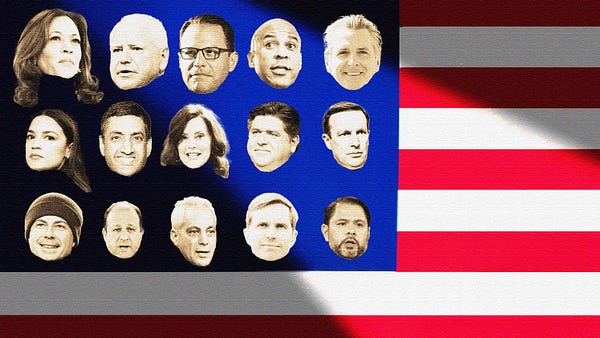

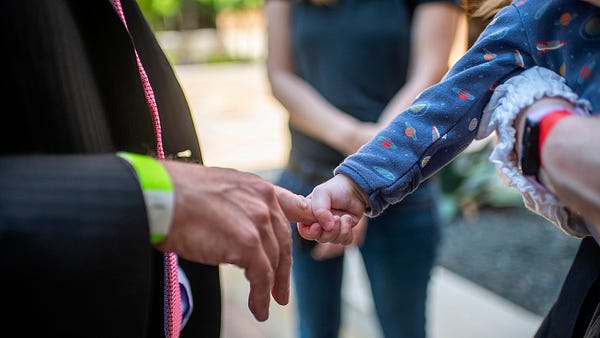

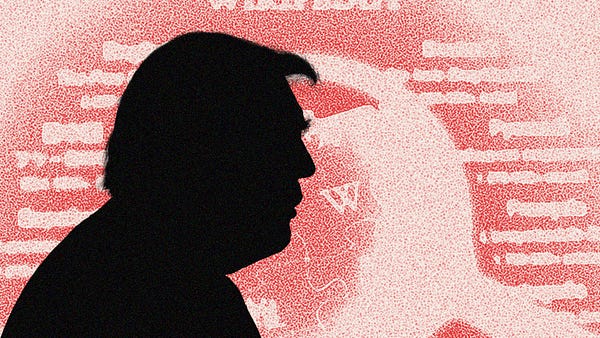



David doesn't bother to mention that the curriculum in question was for 2nd graders. Showing traumatic imagery to kids at that age for 3 months is basically brainwashing.
Herein lies the inherent danger of one side or the other on the cultural political spectrum garnering and abusing their temporary hegemony. There will of necessity be a monster pendulum swing back the other direction. This is not a good thing. I have argued for the last few years that the LEFT and the RIGHT need one another desperately. It is pretty easy to howl defiantly right now at the spectacular over reach of the Left in all institutions and then to OVER correct for that when the swing eventually happens. I am a White Southern Conservative Christian MIddle Class Male and I do NOT want to participate in the backlash that is coming. Balance is needed. That is what the ideal of Western Civilisation, exemplified by the uplifting and empowering of the individual in the United States of America is supposed to support.